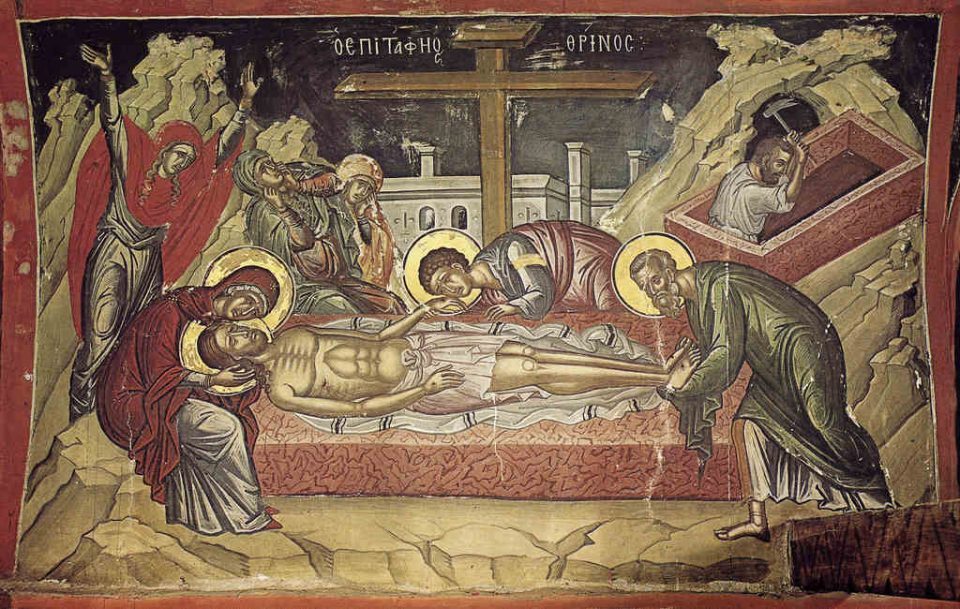Great Saturday is the day between Jesus’ death and His resurrection. It is the day of watchful expectation, in which mourning is being transformed into joy. The day embodies in the fullest possible sense the meaning of xarmolipi – joyful-sadness, which has dominated the
celebrations of Great Week.
On Great and Holy Saturday the Orthodox Church commemorates the burial of Christ and His descent into Hades. It is the day between the Crucifixion of our Lord and His glorious Resurrection.
The Matins of Holy Saturday is conducted on Friday evening, and while many elements of the service represent mourning at the death and burial of Christ, the service itself is one of watchful expectation.
On Great and Holy Saturday the Church contemplates the mystery of the Lord’s descent into Hades, the place of the dead. Death, our ultimate enemy, is defeated from within. “He (Christ) gave Himself as a ransom to death in which we were held captive, sold under sin. Descending into Hades through the Cross … He loosed the bonds of death” (Liturgy of St. Basil).
On Great Saturday our focus is on the Tomb of Christ. This is no ordinary grave. It is not a place of corruption, decay and defeat. It is life-giving, a source of power, victory and liberation.
Holy Saturday is the day when preparations for Easter are slowly coming to an end, and it ends with the midnight vigil when Christian take red eggs to the churches and celebrate Jesus Christ’s resurrection at
midnight.





Comments are closed for this post.